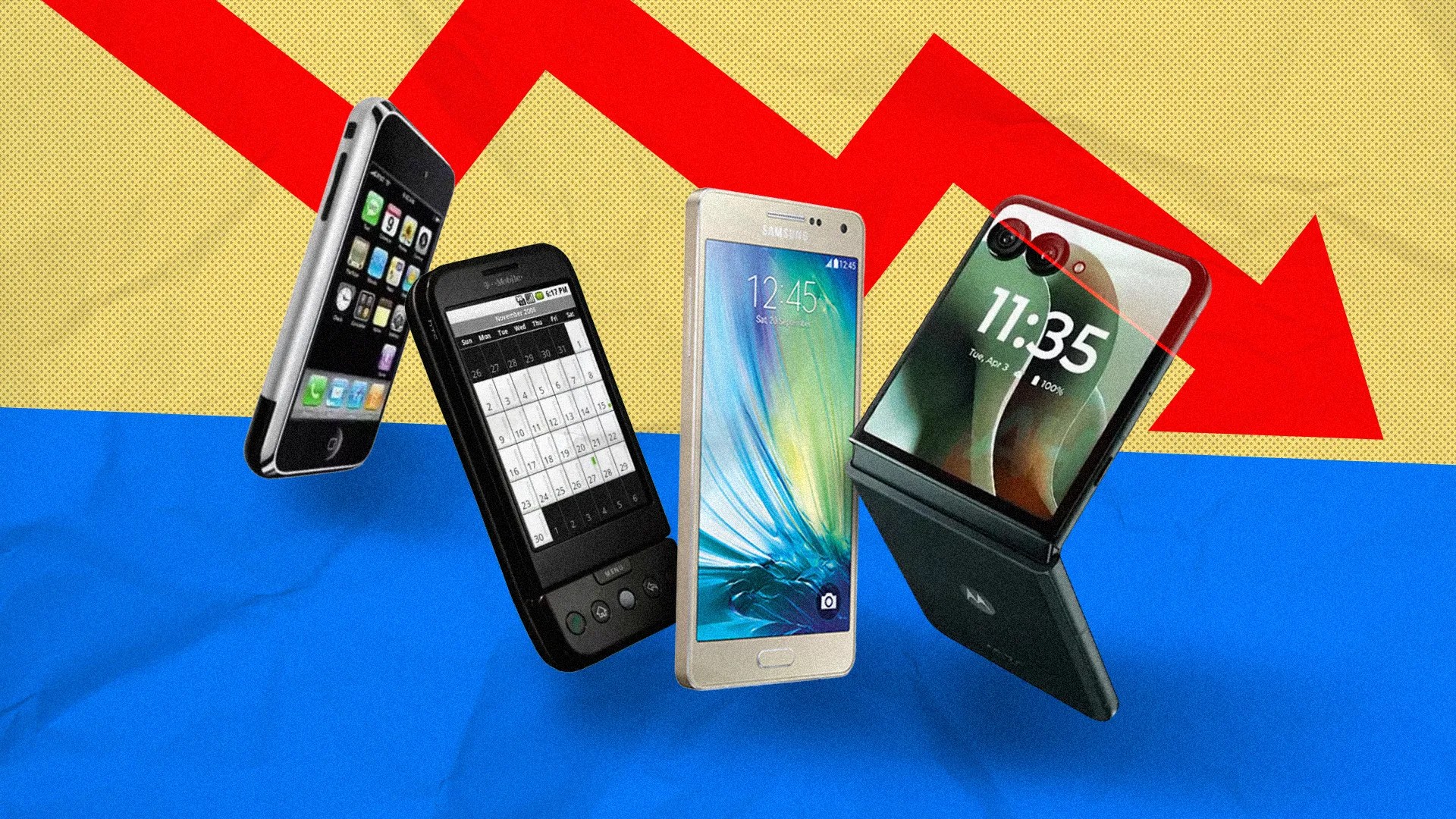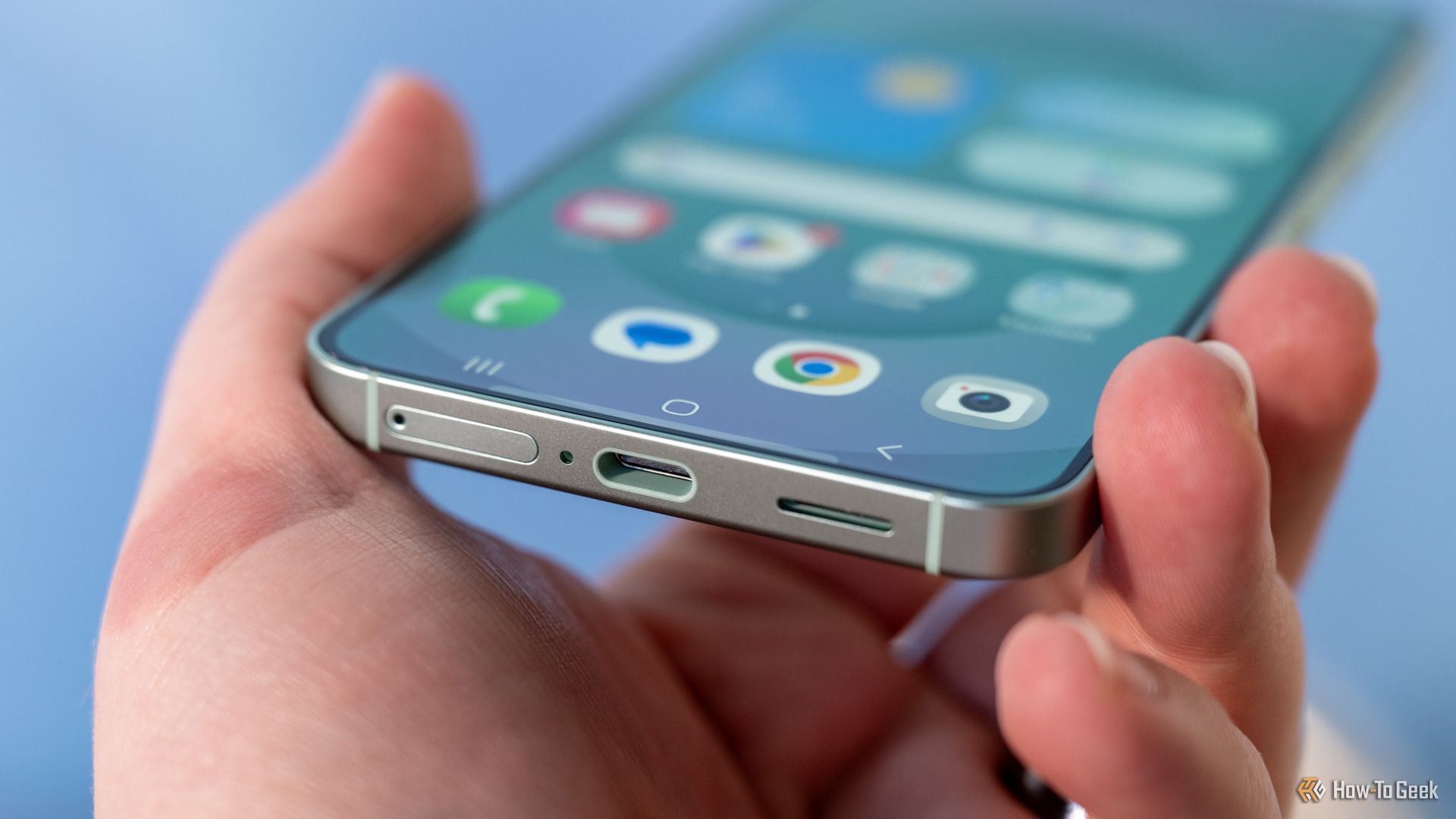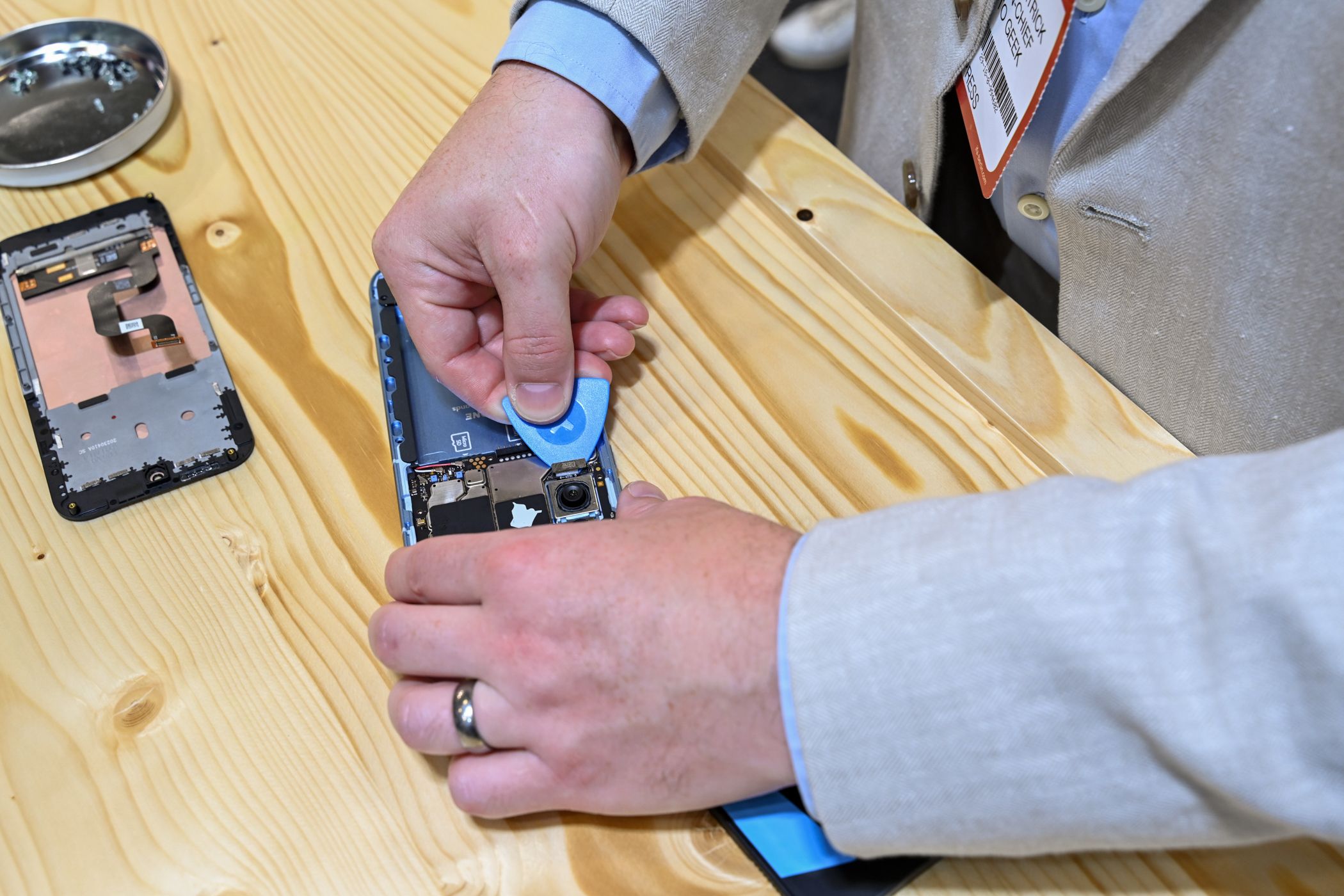Smartphones have come a long way, but not every change has been for the better, and some are just clever ways to part you with your hard-earned cash, disguised as innovation.
The Unboxing Experience Has Become a Letdown
You wouldn’t be the first person to notice the lackluster unboxing experience of modern smartphones. The first iPhone came with a pair of wired earphones, a power adapter, a cable, a microfiber cleaning cloth, some Apple stickers, and a charging dock that doubled as a stand.
I imagine unboxing that thing must’ve felt like opening a Christmas present, but Santa doesn’t visit Silicon Valley anymore. We only get the bare minimum of accessories inside the box now, including the SIM ejection tool and a USB-C cable.
We’re told that doing this reduces carbon emissions and is good for the environment, but then asked to buy and ship a compatible MagSafe charger separately to use the phone’s wireless charging capability, which would easily cancel out any carbon emission savings—not to mention how wireless charging itself is bad for the environment.
Some Android companies still bundle extra goodies with the handset, especially for their cheaper models. For instance, the CMF Phone 2 Pro, Motorola Edge 60 Pro, and Redmi Note 14 Pro (why is every phone a “Pro” now?) all come with a charger and a case included in the box, but don’t expect the same from Samsung, Apple, or Google at any price point.
If you’re buying a flagship phone, it’s assumed that you either already have everything you need or are willing to pay extra for high-end accessories, which sucks because the power adapter and cable that come included in the box are often the best charging solution for that phone. Buying third-party chargers can be a bit risky, and super-cheap options can sometimes heat up the device due to incompatibility, damaging battery health.
No Headphone Jack Means You Have to Keep Buying Earbuds
The Samsung Galaxy S25 without a 3.5mm headphone jack on the bottom.
I don’t care if I sound like a dinosaur here. I miss the headphone jack, and I will keep complaining till the end of time that it’s gone. I’m not an audiophile, but I’m definitely more invested in high-res audio reproduction than the average person. I have four in-ear monitors for crying out loud!
Granted, I can just use a USB-C to 3.5mm adapter, but it’s mighty inconvenient to have to carry that thing when I’m just heading out for a walk. The plug-and-play experience is not something to take for granted: wired headphones don’t need to be charged, don’t face latency or connectivity issues, and deliver much better sound quality for the price.
Don’t get me wrong, I have nothing against wireless earbuds, and I use mine just as often as anyone else, but I should have the option to go wired whenever I want. It’s not like you can only have one or the other. You will always have Bluetooth on your phone to connect to your buds.
Companies say removing the jack was necessary to make room for other components, presumably the battery. Nonsense. If a company really wants to put a headphone jack on its phone, it can easily do so without having to sacrifice anything. The real reason, surprise, surprise, is to keep selling you new earbuds every year or so since they degrade so fast.

Related
It’s Not Just You, Wireless Earbuds Are Designed to Fail
Why can’t earbuds last as long as phones?
Having the option to use wired headphones occasionally means you won’t drain your earbuds as often, and won’t have to charge them as frequently. This will reduce the number of charge cycles they go through and slow down degradation, and increase longevity, saving you money. Sadly, only entry-level and gaming phones come with a jack these days. Thanks, Apple.
No MicroSD Card Slot Forces You to Buy More Internal Storage
128GB stopped being enough storage like three years ago, and yet, all phones except the top-tier Ultra flagships still start at 128GB. Not only are we consuming more content and taking more high-res photos and videos than ever before, but we’re also upgrading our phones less frequently, which means there’s a greater chance of hitting that storage bottleneck.
If your phone doesn’t have expandable storage, you have no option but to delete some of your old files or move them to the cloud or an external drive to make room, and no one wants to do that because it’s inconvenient and time-consuming.
Also, keeping your internal storage bloated affects performance, since your phone’s operating system needs some breathing room to download temporary cache files when you run apps. It’s advisable to keep at least 15-20% of your internal storage free at all times.
No microSD card slot forces you to buy more internal storage, and that would’ve been fine if the storage upgrade cost the same as an SD card of the same capacity, but it doesn’t. An additional 128GB of internal storage usually costs $100 extra, but an SD card of the same capacity costs somewhere around $10.
Granted, the read and write speeds may be slower, but you can just use that space to store your old photos and files which you only open once in a while, freeing up internal storage where you can keep stuff you regularly access to avoid loading times. That’s what I’ve done on my Galaxy A35, possibly the last mid-range Samsung phone to have expandable storage.
Fingerprint Reader on the Back Made More Sense
Justin Duino / Review Geek
One of the areas where I feel we’ve innovated just for the sake of innovating is fingerprint readers. When they first started showing up on smartphones, they were put on the back, right where your index finger would naturally rest, and the indentation made it super easy to locate the sensor by feeling it out.
This meant that by the time you pulled your phone out of your pocket, the device would be unlocked and take you right to your home screen. It was fast, intuitive, and effortless.
Compare this to in-display optical and ultrasonic fingerprint readers, which are the norm now. They aren’t easy to locate in the pocket since there’s obviously no indentation in the phone screen, so you have to take the time to first go to the lock screen, locate the sensor via the icon, press it, and then reach your home screen.
It’s a minor thing, but given the number of times you unlock your phone in a day, it can add up. Capacitive fingerprint readers on the back just made more sense ergonomically.
Non-Removable Batteries Make Replacement Harder
Remember the time when you could just pop open the back cover, swap out the old battery, and instantly give your phone a couple of extra years of life? Yeah, me too. That industry practice is gone for good, and it makes battery replacements significantly harder. Replacing a degraded battery used to be child’s play, but it now requires a visit to a repair center and a not-insignificant fee.
Companies claim that this was done to make your device easier to track in case of theft so that the thief can’t take out the battery to kill the power without specialized tools, and that sounds like a very reasonable argument, until you remember that they can take out the SIM card to achieve the same result. As soon as the SIM card is out, there’s no cellular service, and hence no location tracking.
iPhones are eSIM-only in the US
So if non-removable batteries aren’t enough, maybe we should all switch to eSIM to keep thieves from making our phones untrackable?
You could do that, but eSIM has its own risks, as demonstrated by Android Authority—the author’s toddler threw her iPhone off a balcony, shattering the screen, tearing off the titanium frame, and more importantly, rendering the display completely unresponsive so she couldn’t use it to transfer her eSIM to a new device, essentially locking her out of her phone and all the banking and payment apps on it linked to her number.
The takeaway for me from this story was the trade-off between convenience and security. We all want our phones to be as theft-proof as possible, and eSIMs do promise greater security, but at the same time, none of us ever wants to be in a situation where we’re left with no phone for several days in a row due to accidental damage.
The solution is to give users a choice and let them decide for themselves what kind of risk they are more comfortable with. And that is indeed the case everywhere in the world, except the US where iPhones are eSIM only.
Repairability Is Overlooked to Push Frequent Upgrades
Tech companies want you to upgrade as frequently as possible, but a growing number of people are choosing to keep their phone for longer because the pace of smartphone innovation has slowed down, so you’re not missing out on much if you don’t upgrade.
Google and Samsung now offer up to seven years of Android updates, so software obsolescence is no longer an issue either. That leaves us with two things that could prompt you to upgrade: the degrading battery and accidental damage like a cracked screen.
The bad news is, by the time you’re due for an upgrade, the company might no longer carry spare parts for your phone, so you’re forced to upgrade sooner than you’d like. That’s unless you’re buying from Apple or Samsung, who carry spare parts for models several years old.
Ads Within the Software Ruin User Experience
Nobody likes ads, especially if baked into your phone. A number of Chinese manufacturers are notorious for pushing ads in system apps, via notifications, and in the form of pre-installed third-party apps. My mom’s older Xiaomi phone even showed ads after app installations.
This is a common practice, especially in price-sensitive markets, where manufacturers partner with local brands and third-party app developers and pass on those savings to the consumer via lower prices to sell more units.
People who are on a tight budget are understandably more tolerant of this, but you can’t deny that it completely wrecks the user experience. Samsung sometimes shows ads too, but they’re limited to its own products and services, and aren’t as in-your-face.
Tech companies find all sorts of justifications for taking away features, and not many of those are valid. But since these practices reduce costs and boost profitability, they make too much sense from a business standpoint and are hence carried out, even though they make our experience as consumers objectively worse.










Leave a Comment
Your email address will not be published. Required fields are marked *